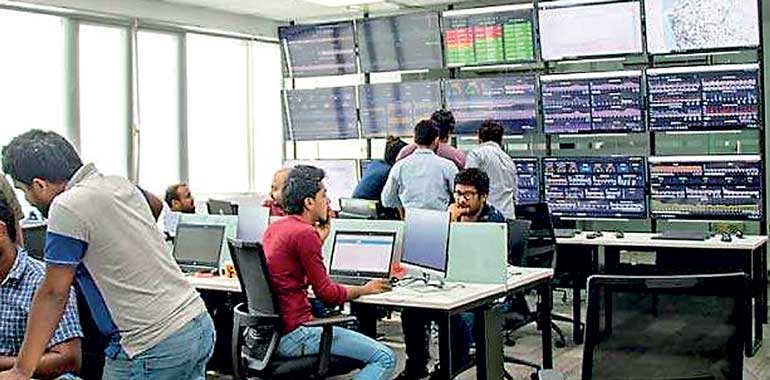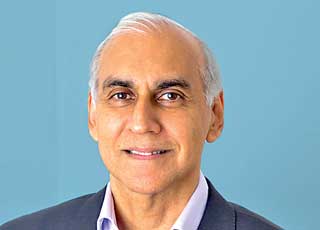Tuesday Dec 09, 2025
Tuesday Dec 09, 2025
Tuesday, 2 November 2021 00:52 - - {{hitsCtrl.values.hits}}

Ruchi Gunewardene traces the story of how a tiny tech start-up is competing with the world’s best, winning hearts of Sri Lankan consumers
 It was a sunny Sunday morning in January 2015, when I received a call from a former classmate at Royal College. He asked me to speak with his son-in-law, who had an idea for a technology start-up.
It was a sunny Sunday morning in January 2015, when I received a call from a former classmate at Royal College. He asked me to speak with his son-in-law, who had an idea for a technology start-up.
A couple of hours later, Jiffrey Zulfer was seated in my home and taking me through his ride-hailing idea that had already revolutionised the world but had not reached the shores of Sri Lanka. I then asked him to pitch the idea to my brother, who quickly concluded that he would invest, and I followed suit. With two additional venture capital investments (one of which was from LOLC Group), the start-up was ready to roll.
At this juncture, based on the accepted rate of failure of start-ups in the consumer marketing space, it was about 1 in 100 chance of success.
The timelines
Apple iPhone’s launch in 2007 unleashed an entirely new business category of companies, built on smart phone apps.
Uber was one such and its presence was signalled to the world through a beta launch in San Francisco in May 2010. This immediately created a proliferation of local ride-hailing start-ups across the world. Gojek in Indonesia and Ola in India commenced in 2010 itself; in 2012, Didi in China and Grab in Malaysia emerged.
Having pioneered the ride hailing concept, Uber needed to consolidate and expand its network into other countries before the local brands got a significant head-start. It entered India in 2013 and China in 2014. Competition was fierce, as the local start-ups fended off the global giant in their individual territories.
By early 2015, only a few countries had not gone through the ride-hailing revolution, and Sri Lanka was one. The timing for a local launch seemed to be perfect. As Uber was still busy expanding its presence in larger countries there was only a tiny window of opportunity available for us. A quick successful launch and consolidation was vital for success.
The race was on
With the funding secured, the two-man technology team tinkered around with a beta version of the app for several months. By June 2015, they had created a basic operating system, which proved to be a technical marvel. The system was stable, and it connected passengers with the closest driver in the area.
A contemporary and catchy brand name was selected, and PickMe was born!
In order to introduce the novel concept of ride-hailing, as opposed to phoning for a taxi, the company had to convince existing taxi car owners who were with conventional companies to adopt the new technology. This was not easy, as most were reluctant to jeopardise their current arrangements that were working well. The taxi-cab companies were also approached to collaborate, but they declined.
Further investment was therefore needed to do it alone. In order to encourage trial, PickMe provided smartphones to taxi car owners free of charge. This was soon expanded to also include tuks.
The primary means of communication was word of mouth, which had a powerful impact in convincing those who were not familiar with ride-hailing. Through the primary contacts of drivers who had got the new smartphone and through people working at PickMe, word quickly spread of the new mode of hailing a cab in the city of Colombo. Many people who had been abroad and had experienced Uber or a similar ride-hailing app were the first adopters.
As taxi car and tuk owners got wind of the free smartphone offer, they began to line up outside the PickMe office, waiting to be registered. This had to be done manually and included an education process of training on the use of a smartphone while ensuring standards were maintained. This created more awareness, and business rapidly grew in multiples each week.
Meanwhile, the constant anxiety was about when a well-resourced and experienced international brand would enter the market. The technological and operational improvements needed to win customers well before that. This was a constant race against time.
Eventually, it so happened that PickMe had just about enough time, with a 15-month runway since its introduction to the market. By October 2016, Uber entered Sri Lanka.
Sri Lankan ingenuity at work
Being the pioneering ride-hailing app in the country, PickMe had a significant advantage with customers who were already downloading and using it. During this time, most of the taxi cars and tuks were proudly adorning the PickMe brand on their vehicles, as it set them apart from the conventional operators. This, in turn, generated more awareness and increased the customer base. The company had entered a recurring cycle of business growth.
In this phase, PickMe had a solid team of technologists drawn from engineering and IT departments across universities in Sri Lanka. The company was pioneering the development of advanced technology direct to customers and needed to understand their behaviour, usage and attitudes to keep pace. To meet customer expectations and to accommodate unique local innovations, the platform needed to be constantly and rapidly updated with new features and standards. Unknown to the user, even today, there are constant updates taking place on a daily basis.
The ingenuity of the Sri Lankan engineers and IT specialists was what the company had bet on at this juncture. There was extensive focus to get the best talent in this exciting new field in which PickMe was pioneering. Transactions per minute were now racing up to levels that had never been experienced on any platform in Sri Lanka, and PickMe had to come up with the means of scaling up to manage capacities without impacting the smooth operations of the system.
To the engineers, this was an entirely new challenge, as managing this level of complexity and transaction volumes had never been done before. Even local telecom partner capacity was hard-pressed to cope. Real-time tracking was required to ensure that high-density areas were identified and anticipated in advance, enabling efficient distribution of customer responses and effective management of the “load” during peak times. This evolved into the application of artificial intelligence systems.
The closest equivalent to this experience would be the Sri Lankan-built platform in use by the London Stock Exchange, which had taken decades to perfect. PickMe, however, did not have the luxury of time.
Pandemic pivot and winning customers
The pandemic and related shutdowns posed a new set of challenges, as PickMe had to pivot to build a more robust system to accommodate deliveries. While ride-hailing was the dominant platform, resources needed to be diverted to perfect the food and grocery delivery services. In addition, the parcel delivery service PickMe Flash was introduced, and this was a massive success, as customers were able to send items from one house to another during the lockdowns.
PickMe is at the forefront of shaping the mobility eco-system through technology-driven innovation. It is a home-grown product, built by Sri Lankans for Sri Lankans, while ensuring global service standards are maintained.
Unlike the competition, all transactions on the platform are retained in the country and is not syphoned off to the USA, thereby saving valuable foreign exchange. In this way, during these difficult times PickMe is contributing in its own way to the economic challenges faced by the country.
By thinking local and innovating, its mission is to bring joy to the life of Sri Lankans. This is what it strives to do daily, winning consumer hearts.